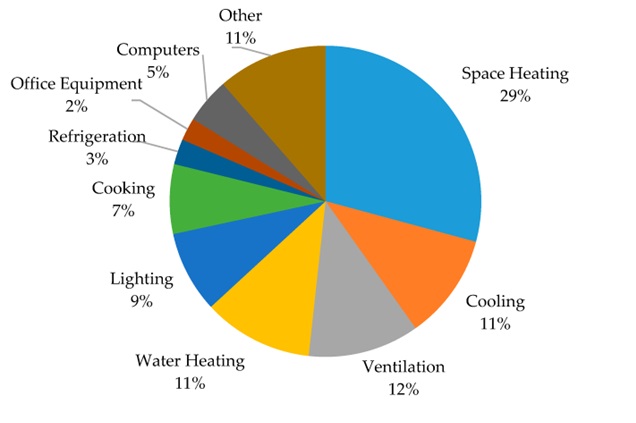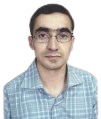Review of Heat Pipe Heat Exchangers in HVAC and R Systems

DOI:
https://doi.org/10.54060/jmce.2023.45Keywords:
Waste heat recovery, HVAC and R, Heat pipe heat exchangersAbstract
The domain of Waste Heat Recovery is particularly crucial for countries facing energy consumption deficiencies. Stringent environmental regulations act as a catalyst, propelling the evolution of innovative technologies and equipment. Striking a balance between economically viable, technically feasible, and environmentally sound waste heat recovery methods is imperative, extending beyond Air Conditioners to encompass various processes. Swift advancements are required to effectively recover waste heat from diverse processes. HVAC systems, like many engineering systems, generate waste heat that holds the potential for recovery and reuse in alternative applications. This study focuses on exploring noble recovery methods, utilizing hot air reclaimed from the condenser of an HVAC system, determined through mass and energy balance considerations. Numerous experimental and theoretical investigations have been undertaken on High-Performance Heat Exchangers (HPHE) since Akachi first proposed them in 1990. However, due to the intricate interplay of hydrodynamics and thermodynamics, the operational mechanism of HPHE remains highly complex and not entirely elucidated. With high expectations for HPHE applications in the HVAC and Refrigeration (R) sector, this paper undertakes a comprehensive review of its development. It systematically summarizes the latest findings from both experimental and theoretical studies, with a specific focus on the HVAC and R field. Additionally, the paper highlights promising and innovative applications of HPHE. The intention is to furnish a foundational reference for future research endeavors in this evolving field.
Downloads
References
N. Enteria and K. Mizutani, “The role of the thermally activated desiccant cooling technologies in the issue of energy and environment,” Renew. Sustain. Energy Rev., vol. 15, no. 4, pp. 2095–2122, 2011. https://doi.org/10.1016/j.rser.2011.01.013.
R. Qi, L. Lu, and H. Yang, “Investigation on air-conditioning load profile and energy consumption of desiccant cooling sys-tem for commercial buildings in Hong Kong,” Energy Build., vol. 49, pp. 509–518, 2012. https://doi.org/10.1016/j.enbuild.2012.02.051.
L. Pérez-Lombard, J. Ortiz, and C. Pout, “A review on buildings energy consumption information,” Energy and buildings, vol. 40, no. 3, pp. 394-398, 2008. https://doi.org/10.1016/j.enbuild.2007.03.007.
Y. Yao and J. Chen, “Global optimization of a central air-conditioning system using decomposition–coordination meth-od,” Energy Build., vol. 42, no. 5, pp. 570–583, 2010. https://doi.org/10.1016/j.enbuild.2009.10.027.
C. A. Balaras et al., “Solar air con-ditioning in Europe-an overview,” Renewable and sustainable energy reviews, vol. 11, no. 2, pp. 299–314, 2007. https://doi.org/10.1016/j.rser.2005.02.003.
K. N. Le, C. N. N. Tran, and V. W. Y. Tam, “Life-cycle greenhouse-gas emissions assessment: An Australian commercial building perspective,” J. Clean. Prod., vol. 199, pp. 236–247, 2018. https://doi.org/10.1016/j.jclepro.2018.07.172.
S. Vyas, S. Ahmed, and A. Parashar, “BEE (Bureau of energy efficiency) and Green Buildings,” International Journal of Re-search, vol. 1, no. 3, pp. 23–32, 2014.
K. F. Fong, T. T. Chow, C. K. Lee, Z. Lin, and L. S. Chan, “Comparative study of different solar cooling systems for buildings in subtropical city,” Sol. Energy, vol. 84, no. 2, pp. 227–244, 2010. https://doi.org/10.1016/j.solener.2009.11.002.
H. El-Dessouky, H. Ettouney, and A. Al-Zeefari, “Performance analysis of two-stage evaporative coolers,” Chemical Engi-neering Journal, vol. 102, no. 3, pp. 255–266, 2004. https://doi.org/10.1016/j.cej.2004.01.036.
A. E. Outlook, “Energy information administration,” Department of Energy, vol. 92010, no. 9, pp. 1–15, 2010.
U. Desideri, S. Proietti, and P. Sdringola, “Solar-powered cooling systems: Technical and economic analysis on industrial refrigeration and air-conditioning applications,” Appl. Energy, vol. 86, no. 9, pp. 1376–1386, 2009. https://doi.org/10.1016/j.apenergy.2009.01.011.
Q. Ma, R. Z. Wang, Y. J. Dai, and X. Q. Zhai, “Performance analysis on a hybrid air-conditioning system of a green build-ing,” Energy Build., vol. 38, no. 5, pp. 447–453, 2006. https://doi.org/10.1016/j.enbuild.2005.08.004.
C. B. Ramspeck, “Thermal environmental conditions for human occupancy,” 2004.
Transition to sustainable buildings: strategies and opportunities to 2050. Organization for Economic Co-Operation & Devel-opment. 2013.
L. Pérez-Lombard, J. Ortiz, and C. Pout, (2008). “A review on buildings energy consumption information,” Energy and buildings, vol. 40, no. 3, pp. 394-398, 2008. https://doi.org/10.1016/j.enbuild.2007.03.007.
K.W. Roth, D. Westphalan, J. Dieckmann, S.D. Hamilton, W. Goetzler, “Energy Consumption Characteristics of Commercial Building HVAC Systems Volume III,” Energy savings potential, Cambridge, MA, 2002.
A. El-Baky and M. A. Mohamed, “Heat pipe heat exchanger for heat recovery in air conditioning,” Applied thermal engi-neering, vol. 27, no. 4, pp. 795–801, 2007. https://doi.org/10.1016/j.applthermaleng.2006.10.020.
G. P. Peterson, An Introduction to Heat Pipes. Modeling, Testing, and Applications. New York, Chichester: Wiley, 1994.
G. M. Grover, T. P. Cotter, and G. F. Erickson, “Structures of very high thermal conductance,” J. Appl. Phys., vol. 35, no. 6, pp. 1990–1991, 1964.
X. Tang, L. Sha, H. Zhang, & Y. Ju, “A review of recent experimental investigations and theoretical analyses for pulsating heat pipes,” Frontiers in Energy, vol. 7, pp. 161-173, 2013.
S. Khandekar and M. Groll, “An insight into thermo-hydrodynamic coupling in closed loop pulsating heat pipes,” Int. J. Therm. Sci., vol. 43, no. 1, pp. 13–20, 2004.https://doi.org/10.1016/S1290-0729(03)00100-5.
W. Qu and H. B. Ma, “Theoretical analysis of startup of a pulsating heat pipe,” Int. J. Heat Mass Transf., vol. 50, no. 11–12, pp. 2309–2316, 2007. https://doi.org/10.1016/j.ijheatmasstransfer.2006.10.043.
S. Khandekar, N. Dollinger, and M. Groll, “Understanding operational regimes of closed loop pulsating heat pipes: an ex-perimental study,” Appl. Therm. Eng., vol. 23, no. 6, pp. 707–719, 2003. https://doi.org/10.1016/S1359-4311(02)00237-5.
M. Zhao, Prediction and Validation Technologies of Aerodynamic Force and Heat for Hypersonic Vehicle Design. Springer Nature, 2021.
Y.-H. Lin, S.-W. Kang, and H.-L. Chen, “Effect of silver nano-fluid on pulsating heat pipe thermal performance,” Appl. Therm. Eng., vol. 28, no. 11–12, pp. 1312–1317, 2008. https://doi.org/10.1016/j.applthermaleng.2007.10.019.
P. Meena, S. Rittidech, & N. Poomsa-Ad, “Closed-loop oscillating heat-pipe with check valves (CLOHP/CVs) air-preheater for reducing relative humidity in drying systems,” Applied Energy, vol. 84 no. 4, pp. 363-373, 2007. https://doi.org/10.1016/j.apenergy.2006.09.009.
D. Yuan, W. Qu, and T. Ma, “Flow and heat transfer of liquid plug and neighboring vapor slugs in a pulsating heat pipe,” Int. J. Heat Mass Transf., vol. 53, no. 7–8, pp. 1260–1268, 2010. https://doi.org/10.1016/j.ijheatmasstransfer.2009.12.042.
W. Qu, Y. Li, and T. Ma, “Frequency analysis on pulsating heat pipe,” in ASME 2007 InterPACK Conference, Volume 1, 2007.
N. Bhuwakietkumjohn and S. Rittidech, “Internal flow patterns on heat transfer characteristics of a closed-loop oscillating heat-pipe with check valves using ethanol and a silver nano-ethanol mixture,” Exp. Therm. Fluid Sci., vol. 34, no. 8, pp. 1000–1007, 2010. https://doi.org/10.1016/j.expthermflusci.2010.03.003.
P. Charoensawan and P. Terdtoon, “Thermal performance correlation of horizontal closed-loop oscillating heat pipes,” in 2007 9th Electronics Packaging Technology Conference, 2007.
T. Katpradit, T. Wongratanaphisan, P. Terdtoon, S. Ritthidech, P. Chareonsawan, and S. Waowaew, “Effect of aspect ratios and bond number on internal flow patterns of closed end oscillating heat pipe at critical state,” in Proc. 13th Int. Heat Pipe Conf, Shanghai, PR China, 2004.
Y. Zhang and A. Faghri, “Advances and unsolved issues in pulsating heat pipes,” Heat Trans. Eng., vol. 29, no. 1, pp. 20–44, 2008.
S. Khandekar and M. Groll, “Roadmap to realistic modeling of closed loop pulsating heat pipes,” in Proceedings of the 9th international heat pipe symposium, 2008, pp. 17–20.
P. Cheng, & H. Ma, “A mathematical model of an oscillating heat pipe,” Heat transfer engineering, vol. 32, no. 11-12, pp. 1037-1046, 2011.
P. Supirattanakul, S. Rittidech, and B. Bubphachot, “Application of a closed-loop oscillating heat pipe with check valves (CLOHP/CV) on performance enhancement in air conditioning system,” Energy Build., vol. 43, no. 7, pp. 1531–1535, 2011.
M. Groll and S. Khandekar, “Pulsating heat pipes: progress and prospects,” Proc. Int. Conf. on Energy and the Environment, vol. 1, pp. 723–730, 2003.
H. B. Ma, B. Borgmeyer, P. Cheng, P., & Y. Zhang, “Heat transport capability in an oscillating heat pipe,” 2008.
S. M. Thompson, A.A. Hathaway, C.D. Smoot, C.A. Wilson, H. B. Ma, R. M. Young, & N. Jankowski, “Robust thermal per-formance of a flat-plate oscillating heat pipe during high-gravity loading,” 2011.
S. Khandekar, & A. Gupta, “Embedded pulsating heat pipe radiators,”. In Proceedings of the 14th International Heat Pipe Conference, pp. 22-27, 2007.
S. Rittidech, W. Dangeton, & S. Soponronnarit, “Closed-ended oscillating heat-pipe (CEOHP) air-preheater for energy thrift in a dryer,”. Applied Energy, vol. 81, no. 2, pp. 198-208, 2005. https://doi.org/10.1016/j.apenergy.2004.06.003.
Factors to know should I go for 1 or 2-ton Voltas air conditioners | The News Minute, Voltas India.
M. Dilawar and A. Pattamatta, “A parametric study of oscillatory two-phase flows in a single turn Pulsating Heat Pipe us-ing a non-isothermal vapor model,” Appl. Therm. Eng., vol. 51, no. 1–2, pp. 1328–1338, 2013. https://doi.org/10.1016/j.applthermaleng.2012.11.025.
G. Burban, V. Ayel, A. Alexandre, P. Lagonotte, Y. Bertin, and C. Romestant, “Experimental investigation of a pulsating heat pipe for hybrid vehicle applications,” Appl. Therm. Eng., vol. 50, no. 1, pp. 94–103, 2013. https://doi.org/10.1016/j.applthermaleng.2012.05.037.
B. Choudhary and E. Kumari, “Hydrogen is the future of energy security and sustainability: A review,” Journal of Mechani-cal and Construction Engineering, 2023. https://doi.org/10.54060/jmce.v3i2.34.
M. D. Saini, M. K. Jhala, M. K., & E. Kumari, “Design and operation of air preheater (aph) de-choking device”.
E. Kumari, M. Sharma, & P. M. Meena, “Research Article A Parametric Study to Improve the Heat Transfer of Solar Air Heater Through CFD Analysism” Journal of Mechanical and Construction Engineering (JMCE), vol. 2, no. 2, pp. 1-17, 2022.
E. Kumari, “Dynamic Analysis of High-Rise Buildings Using Simplified Numerical Method”. http://doi.ord/10.5772/intechopen.108556.
E. Kumari, “Dynamic response of composite panels under thermo-mechanical loading,” Journal of Mechanical Science and Technology, vol. 36, no. 8, pp. 3781-3790, 2022. https://doi.org/10.1007/s12206-022-0701-x.
E. Kumari, & S. Lal, “Nonlinear bending analysis of trapezoidal panels under thermo-mechanical load,” Forces in Mechan-ics, vol. 8, p. 100097, 2022. https://doi.org/10.1016/j.finmec.2022.100097
A. Vijayvergiya, E. Kumari, & S. Lal, “Design and Shape Optimization of Connecting Rod End Bearing through ANSYS,” International Research Journal on Advanced Science Hub, vol. 3, no. 11, pp. 235-242, 2021.
E. Kumari, “Nonlinear bending analysis of cylindrical panel under thermal load,” International Research Journal on Ad-vanced Science Hub, vol. 3, no. 7, pp. 145-150, 2021.
E. Kumari, J. Singh, & G. Kasera, “Analysis of Piston of Internal Combustion Engine under Thermo-mechanical Load,”. International Research Journal on Advanced Science Hub, 3(Special Issue 9S), pp. 11-18, 2021.
M. Sharma, D. E. Kumari, & D. P. Meena, “CFD analysis in solar air heater for heat transfer enhancement: a re-view,”. Proceedings of the Recent Advances in Renewable Energy Sources-RARES2021, 2021.
E. Kumari, (2021). “Free vibration analysis of rotating laminated composite plate type blades with variable thick-ness,” Materials Today: Proceedings, vol. 43, pp. 1762-1773, 2021. https://doi.org/10.1016/j.matpr.2020.10.443.
E. Kumari, & D. Saxena, “Buckling analysis of folded structures,” Materials Today: Proceedings, vol. 43, pp. 1421-1430, 2021. https://doi.org/10.1016/j.matpr.2020.09.179.
S. Lal, & E. Kumari, “Performance analysis of a low-price thermoelectric cooler: an experimental approach”. Advances in Power Generation from Renewable Energy Sources (APGRES 2017), pp. 76-82, 2017.

Downloads
Published
How to Cite
CITATION COUNT
Issue
Section
License
Copyright (c) 2023 Manishkumar Gadle, Emarti Kumari

This work is licensed under a Creative Commons Attribution 4.0 International License.
























